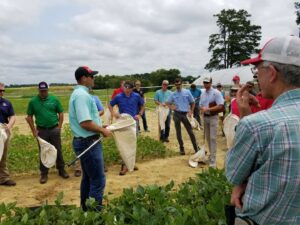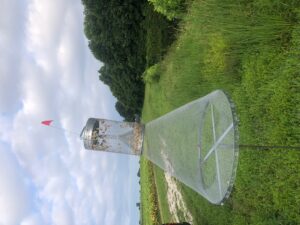
Insecticide Recommendations for Tarnished Plant Bug
As cotton starts to square, it’s time for growers to check their fields every week for tarnished plant bugs. …



El inglés es el idioma de control de esta página. En la medida en que haya algún conflicto entre la traducción al inglés y la traducción, el inglés prevalece.
Al hacer clic en el enlace de traducción se activa un servicio de traducción gratuito para convertir la página al español. Al igual que con cualquier traducción por Internet, la conversión no es sensible al contexto y puede que no traduzca el texto en su significado original. NC State Extension no garantiza la exactitud del texto traducido. Por favor, tenga en cuenta que algunas aplicaciones y/o servicios pueden no funcionar como se espera cuando se traducen.
Inglês é o idioma de controle desta página. Na medida que haja algum conflito entre o texto original em Inglês e a tradução, o Inglês prevalece.
Ao clicar no link de tradução, um serviço gratuito de tradução será ativado para converter a página para o Português. Como em qualquer tradução pela internet, a conversão não é sensivel ao contexto e pode não ocorrer a tradução para o significado orginal. O serviço de Extensão da Carolina do Norte (NC State Extension) não garante a exatidão do texto traduzido. Por favor, observe que algumas funções ou serviços podem não funcionar como esperado após a tradução.
English is the controlling language of this page. To the extent there is any conflict between the English text and the translation, English controls.
Clicking on the translation link activates a free translation service to convert the page to Spanish. As with any Internet translation, the conversion is not context-sensitive and may not translate the text to its original meaning. NC State Extension does not guarantee the accuracy of the translated text. Please note that some applications and/or services may not function as expected when translated.
Collapse ▲
As cotton starts to square, it’s time for growers to check their fields every week for tarnished plant bugs. …

Rockingham County just got an unwelcome new resident — spotted lanternfly (SLF). This isn’t just any insect; it’s an …

With cotton prices down, many growers are looking for ways to cut production costs. This article emphasizes the importance …
Soil Samples are a very important part of yard, field, and pasture management. The NCDA&CS offers soil sampling services …

As we enter early August, we continue to track bollworm populations across the state. Extension personnel across the state …
Below is some information on the drought and some things to consider if you are looking for alternatives to …

For many years, corn earworm has been the top pest in North Carolina soybeans in terms of cost of …

The short answer for thrips is no, and for plant bugs, yes, if it hits threshold. We covered this …

Virtual Webinar on the final updates to the H2A Adverse Wage Rates. Registration for this meeting is required to …

The 2024 NC Farm School has come to our district! Location: East Carolina Agricultural and Education Center, 1175 Kingsboro Rd, …

The hemlock woolly adelgid is an enemy of hemlock forests and has been for years. Native to Asia and …

If you have a crape myrtle that looks like the images you may have a scale problem, check out …
We will offer 2 hours of V Safety Credit for the Private Pesticide Applicators here at the Halifax County …

Last month, we reached a milestone one year since spotted lanternfly was detected in North Carolina. The first active …

Powdery mildew is a common fungal disease that effects many different plants. The symptom of powdery mildew is a …

The warm weather seems to be here to stay and with that, last year’s new invasive insect arrivals are …

I have already gotten some reports and calls about bee swarms being seen in the area this year. Why …

Cedar-Apple Rust You may be seeing orange gelatinous blobs with what looks like tentacles on redcedar or juniper trees now …

Pesticide Collection Day North Carolina Department of Agriculture and Consumer Services, in cooperation with the Halifax County Cooperative Extension, will …

Lawn burweed Identification Lawn burweed (Soliva sessilis), is also known as spurweed, bindi weed, field burweed and Spurweed. It is a …

Gummy stem blight is caused by several closely related fungal pathogens in the genus Stagonosporopsis …

This vegetable pathology factsheet describes the identification and treatment of anthracnose in cucurbits.

Several species of grasshoppers can cause foliar feeding damage in tobacco. They are typically most …

This Extension publication provides an overview of the tobacco budworm (Chloridea virescens), a common pest …

This factsheet summarizes the characteristics of bees and addresses how to control them as an …

This publication discusses Anthracnose Fruit Rot (Colletotrichum sp.) of blueberries in detail. Included are the …

This factsheet describes the symptoms of a shoot inhibitor herbicide injury.

This factsheet describes the symptoms of a metribuzin herbicide injury.